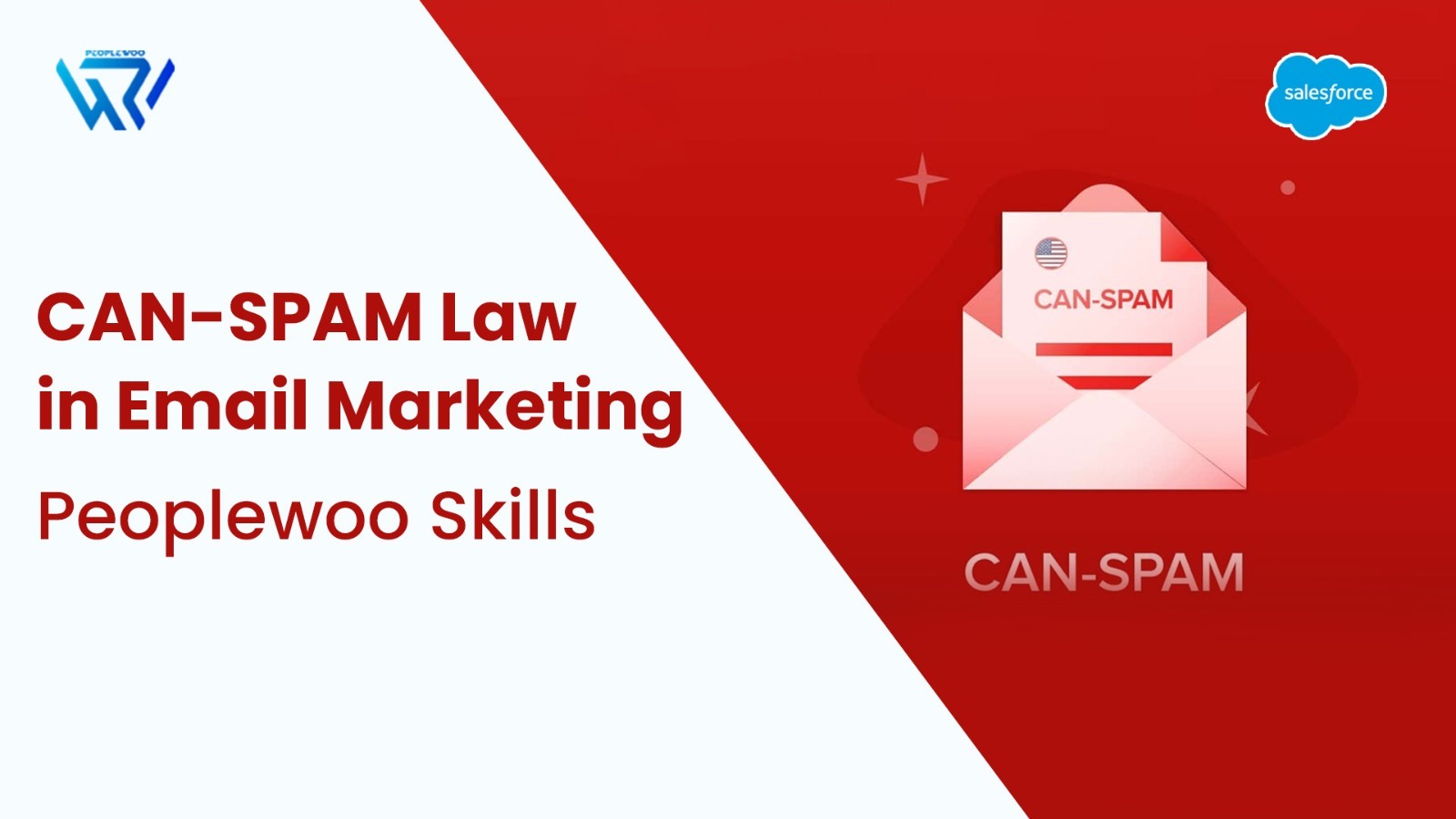
Digital marketer or Salesforce Marketing Cloud (SFMC) user, it’s essential to understand email compliance laws. One of the most important is the CAN-SPAM Act, a U.S. law that sets rules for commercial email communications and protects consumers from spam.
This guide is designed for beginners, students, and professionals working with email campaigns in SFMC or other platforms. You’ll learn what CAN-SPAM is, why it matters, and how to ensure your emails are compliant.
What is the CAN-SPAM Act?
CAN-SPAM stands for Controlling the Assault of Non-Solicited Pornography and Marketing. Enacted in 2003 by the U.S. government, it regulates how businesses send commercial emails, ensuring transparency, consent, and the ability to opt out.
Watch Our Full Tertial Video
Commercial vs Transactional Emails: What’s the Difference?
Under the CAN-SPAM Act, different rules apply depending on whether your message is marketing-focused (commercial) or service-based (transactional). Here’s a breakdown of the key criteria:
| Criteria | Commercial Email | Transactional Email |
|---|---|---|
| Purpose | Promote a product, service, event, or brand | Provide information related to a transaction or account |
| Examples | Discount offers, newsletters, promotional campaigns | Order confirmations, shipping notifications, password resets |
| CAN-SPAM Rules Apply? | Yes (fully regulated) | Partially (limited rules) |
| Unsubscribe Link Required? | Yes | No (unless mixed with promotions) |
| Identifying as an Ad | Required | Not Required |
| Physical Address Required? | Yes | Yes |
Every Key Rule Under CAN-SPAM Explained with Examples
- Don’t use false or misleading headers
Example: Pretending to be “Apple Support” when you’re not. - Don’t use deceptive subject lines
Example: “Your invoice is ready” but it’s actually a promotion. - Identify the message as an advertisement
Example: Offering a “Free Trial” but hiding paid subscription details. - Include your valid physical address
Example: No business address listed in the footer. - Tell recipients how to opt out
Example: Missing unsubscribe link in promotional emails. - Honor opt-out requests within 10 business days
Example: Users still receive emails weeks after unsubscribing. - Monitor third-party vendors
Example: An agency sends non-compliant emails on your behalf.
CAN-SPAM Violations and Penalties
Violating CAN-SPAM can result in severe penalties. The Federal Trade Commission (FTC) can impose fines of up to $51,744 per email that violates the law.
| Violation | Penalty |
|---|---|
| False email headers | Up to $51,744 per email |
| Failure to include unsubscribe mechanism | Legal action, blacklisting |
| Delayed opt-out processing | Fines and compliance audits |
CAN-SPAM Compliance in Salesforce Marketing Cloud
- Send Classifications: Define transactional vs. commercial emails.
- Subscription Centers: Let users manage email preferences easily.
- Unsubscribe Management: Automatically includes unsubscribe links.
- CAN-SPAM Footer: Use pre-built compliant footers in SFMC.
Master Email Compliance with Peoplewoo Skills
Join our expert-led Salesforce Marketing Cloud training and learn how to build professional, compliant email campaigns using Salesforce tools and real-world examples.
🚀 Register for Free Demo | 🎓 Salesforce Marketing Cloud Training on Udemy | 📱 Chat on WhatsAppBest Practices to Stay Compliant
- Always include an unsubscribe link in promotional emails.
- Use a valid sender address and company name.
- Test all email templates for compliance before sending.
- Avoid clickbait or misleading subject lines.
- Use double opt-in to confirm valid email subscribers.
Why Learn with Peoplewoo Skills?
- Live training with hands-on exercises.
- Real projects using Email Studio, Journey Builder, and Automation Studio.
- Interview preparation and certification guidance.
- Access to practice orgs and real business use cases.
- Curriculum designed for beginners to advanced learners.
Be part of the growing Peoplewoo Skills community — where professionals upskill, grow, and launch successful careers in Salesforce Marketing Cloud!
Frequently Asked Questions (FAQ)
Conclusion
Compliance with the CAN-SPAM Act isn’t just a legal requirement — it’s a trust-building strategy. By understanding the rules for commercial and transactional emails, businesses can protect their reputation, avoid penalties, and deliver a better customer experience.
Practice smart. Learn with confidence. Succeed with Peoplewoo Skills.
More SFMC Resources
Start your SFMC journey today — join our Live Training or learn at your own pace with our Udemy Course.
Need help? Chat with us on WhatsApp anytime.
Learn. Practice. Get Certified. Succeed with Peoplewoo Skills.
Visit www.peoplewoo.com

